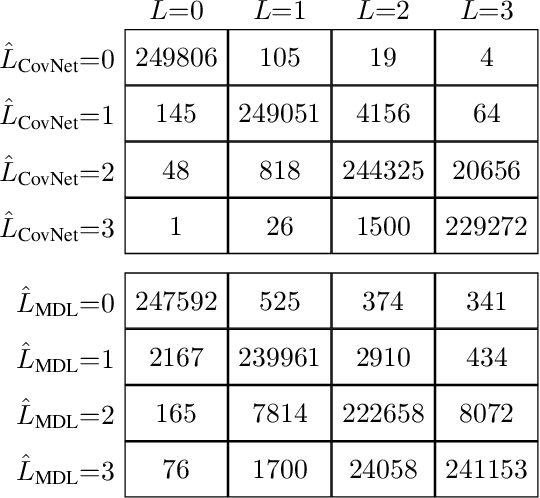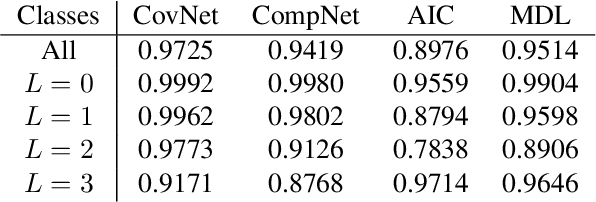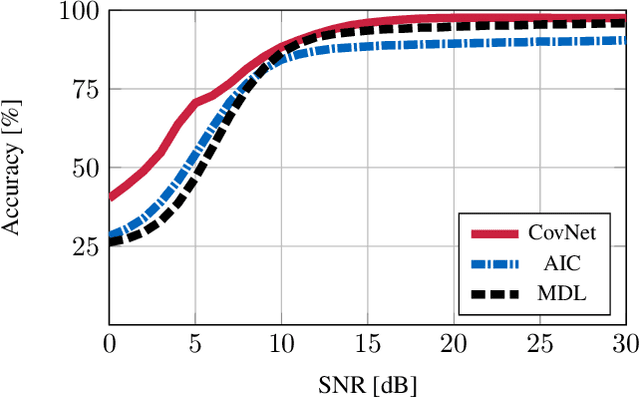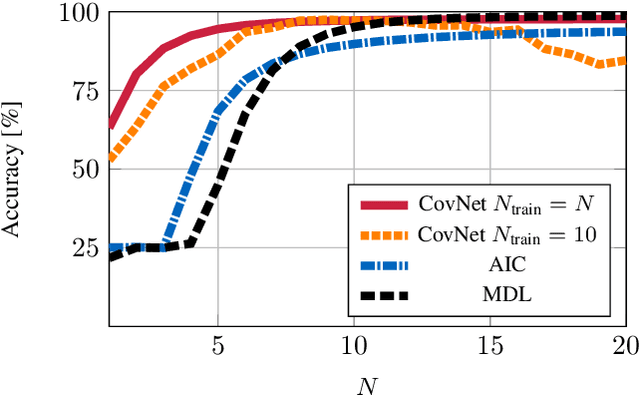Andreas Barthelme
ChainNet: Neural Network-Based Successive Spectral Analysis
May 08, 2021



Abstract:We discuss a new neural network-based direction of arrival estimation scheme that tackles the estimation task as a multidimensional classification problem. The proposed estimator uses a classification chain with as many stages as the number of sources. Each stage is a multiclass classification network that estimates the position of one of the sources. This approach can be interpreted as the approximation of a successive evaluation of the maximum a posteriori estimator. By means of simulations for fully sampled antenna arrays and systems with subarray sampling, we show that it is able to outperform existing estimation techniques in terms of accuracy, while maintaining a very low computational complexity.
Model Order Selection in DoA Scenarios via Cross-Entropy based Machine Learning Techniques
Oct 21, 2019



Abstract:In this paper, we present a machine learning approach for estimating the number of incident wavefronts in a direction of arrival scenario. In contrast to previous works, a multilayer neural network with a cross-entropy objective is trained. Furthermore, we investigate an online training procedure that allows an adaption of the neural network to imperfections of an antenna array without explicitly calibrating the array manifold. We show via simulations that the proposed method outperforms classical model order selection schemes based on information criteria in terms of accuracy, especially for a small number of snapshots and at low signal-to-noise-ratios. Also, the online training procedure enables the neural network to adapt with only a few online training samples, if initialized by offline training on artificial data.
 Add to Chrome
Add to Chrome Add to Firefox
Add to Firefox Add to Edge
Add to Edge